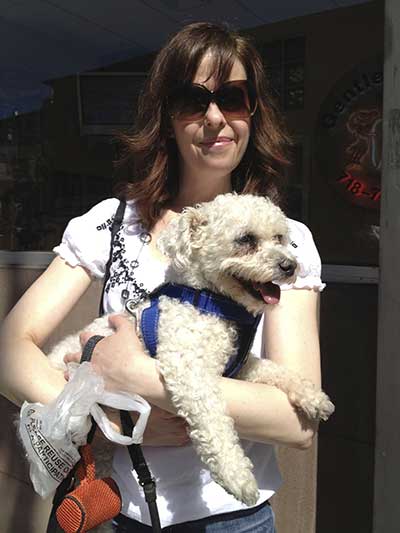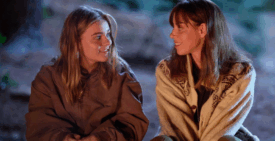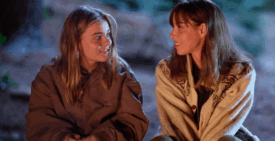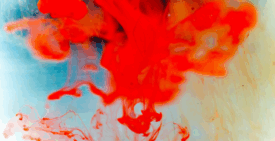There’s no blueprint for the cultural process in which to mourn the death of a dog. So I wonder: How do I commemorate the 15-year life of Peeps, my Bichon Frisé?
One day a couple months ago, a once-voracious Peeps stopped eating. She walked weakly to her orange food bowl filled with fancy pet food and looked up at me despondently. Her cotton-puff fur was stained yellow around her hind quarters from incontinence. It had been some time since she’d scrambled to the door upon hearing a key in the lock. Besides being largely deaf and unable to detect that daily nuance, she was too weak to expend the energy. It soon became time to take her to her longtime vet, Dr. Frydenborg, “to let her go.”
I’ve been drawing my own mourning map as I go along, recently inviting close friends to a “Commemoration of the Life of Peeps” party in which photos of her looped on the living room TV. Attendees shared stories about Peeps. Such as when she ate an errant cheese doodle off the street and then looked on innocently with a circle of orange fur around her mouth. One friend brought over a bottle of vintage Jean Naté body wash, to demarcate the time Peeps returned home reeking of the stuff after getting a lot of attention on a walk. The couple across the hall brought over a salt-free pretzel wrapped in tissue to symbolize the appropriate snack they’d given my sodium-restricted dog.
Beyond that event, however, my mourning has been somewhat rudderless. I miss the clicking of her overgrown nails on the wood floor of Brooklyn apartment. I come home from work and roam my three rooms, divided by the typical thin walls of a rental unit. They are equal parts brimming with matter and overwhelmingly empty. It’s amazing how much and how well a 13-pound body can occupy space.
Related
Many nights, I still jump up reflexively to check the clock. Peeps had accumulated medicines over the years that were meted out four times daily. Gone is the pillbox with the little plastic compartments holding heart failure, epilepsy and high blood pressure at bay, as well as the droplets for her cataracts and inhaler for lung disease. It was busy, sometimes grueling work, this upkeep of Peeps. It may sound crazy but I sometimes long for it.
The book of Genesis describes the difference between a human soul and that of an animal, saying animals are driven entirely by life force, by what is instinctual. By contrast, the higher human soul possesses spirituality, taking us closer to God. I have often struggled with whether this is true. A Reform rabbi I know feels struggled with it, too. “They have a personality; they breathe; they have a heart. They are so connected to God,” she had said.
So in retrospect, I wish I’d have presided over a traditional weeklong Jewish shiva, where people typically visit a family’s home to cherish the memory of a loved one. I’d have used it to tell people how Peeps made me a better person.
In particular, she taught me to be patient. It first seemed a special kind of hell to stop at every single tree on her walks in the dead of winter as she sniffed all the ones lining either side of my block. Being mostly blind over the last year had made her slower and even more methodic about it. I wondered if the insane redundancy of it was some kind of cosmic test. But I came to enjoy that time with Peeps, to marvel at how she relished anew being outside each time. The unhurried pace also gave way to a ritual decompression from the day.
She taught me how to accept frailties with grace. Peeps was dignified even when she could no longer walk down the three flights of steps to the street. When it was time to put her leash on and carry her down, she’d lift her leg up helpfully as I inserted it into the arm loop of the harness and snapped the plastic clasp around her chubby white belly. Once outside, we’d round the corner and walk down Fifth Avenue in Park Slope.
She would freeze in front of the wine store, where the two of us may have been a time or two, and attempt to gain entry in anticipation of a trademark free doggie treat. Trying to drag her past would yield determined backtracking. Most times, we entered, purchased Pinot Grigio and savored several treats. She might have become rather rickety of late. But she still knew where she was going in life and how to get there.
I could only theorize what was going on in her mind in the moments I cursed adversity aloud or slammed closed a laptop, but it was a salve to see her persistent joy. Peeps was there whenever an editor declined a story idea or when I was down about life. She did not judge when, after a couple glasses of Pinot G., I’d blast Joan Baez and the Indigo Girls singing Bob Dylan’s “Don’t Think Twice, It’s All Right.” I’d pick Peeps up and do our little waltz around the living room. It’s really not the same doing it without her.
Peeps would want me to celebrate her existence — likely by licking the sidewalk and stealing pizza slices from the weak hands of children in Prospect Park. Sadly, I don’t think I’d get away with those activities the way she did. Instead, I’ll revel in remembering those moments — even if in doing so I cry a bit, too. Peeps let it all hang out—seemingly without effort. Someday, I’d like to be that way, too.
Karen Iris Tucker is a freelance journalist who writes primarily about health, genetics and cultural politics. Her work can be seen at kareniristucker.contently.com, kareniristucker.com and on Twitter @kareniristucker.












